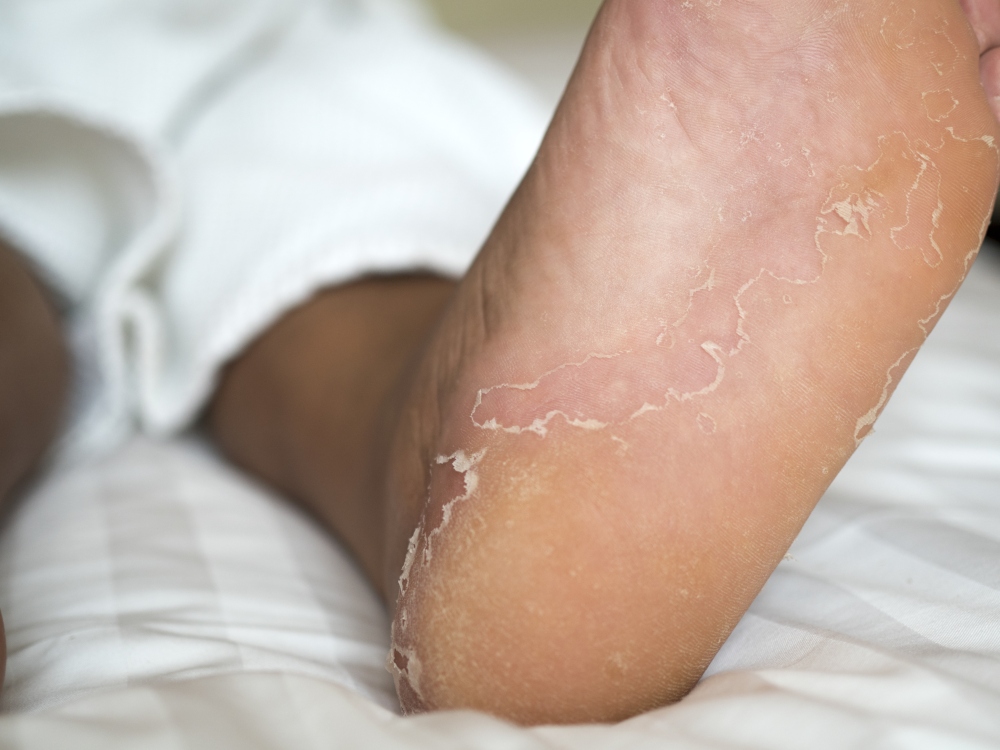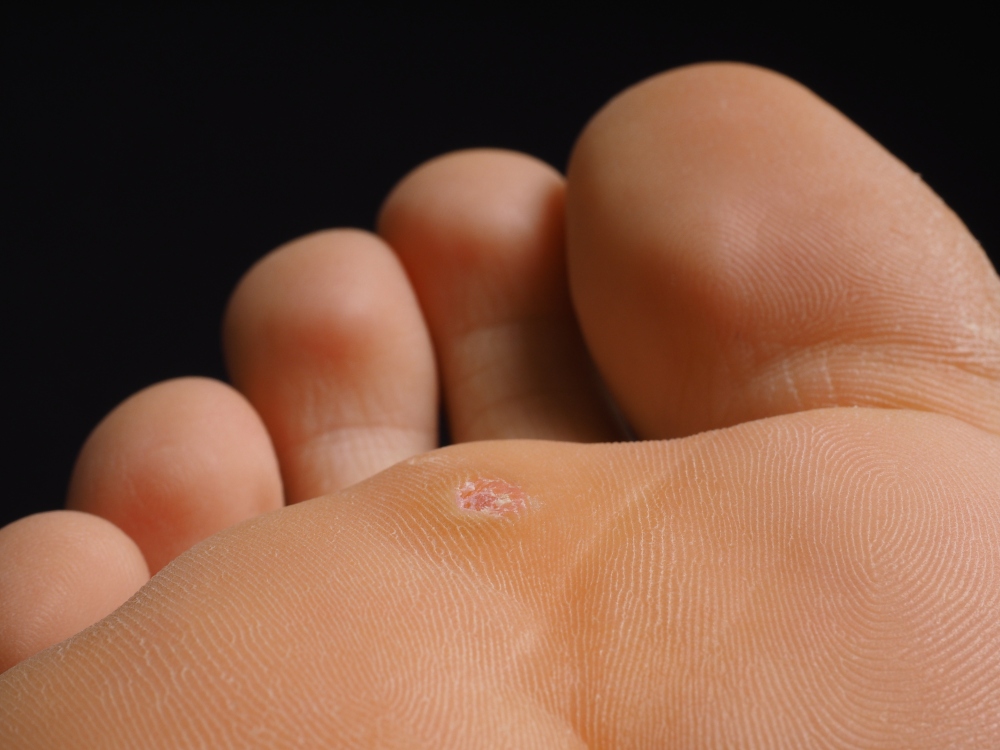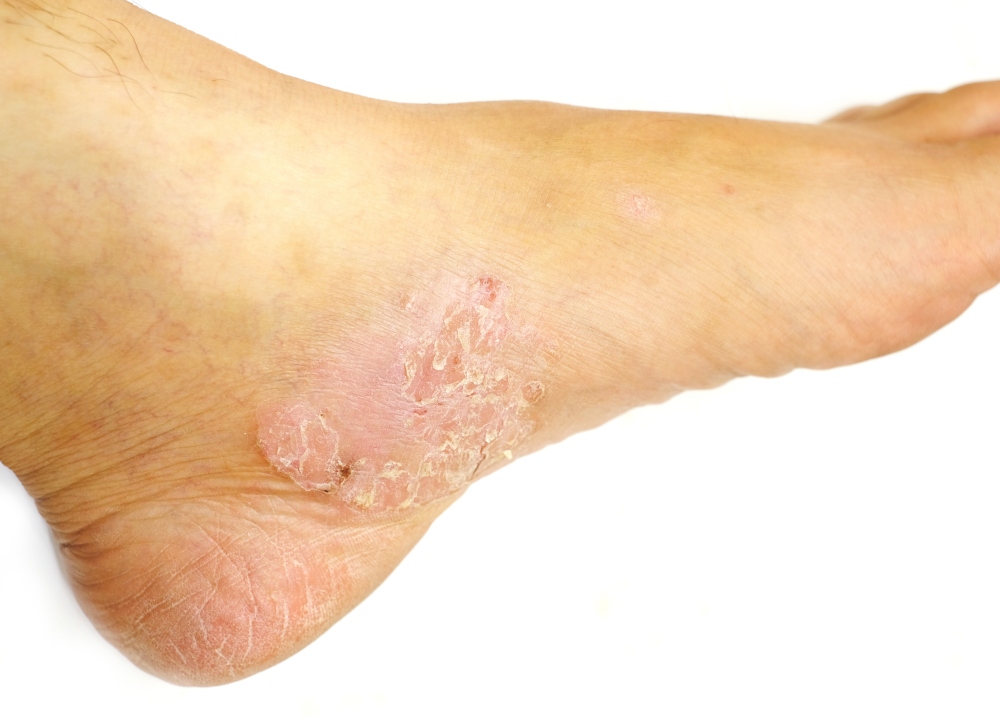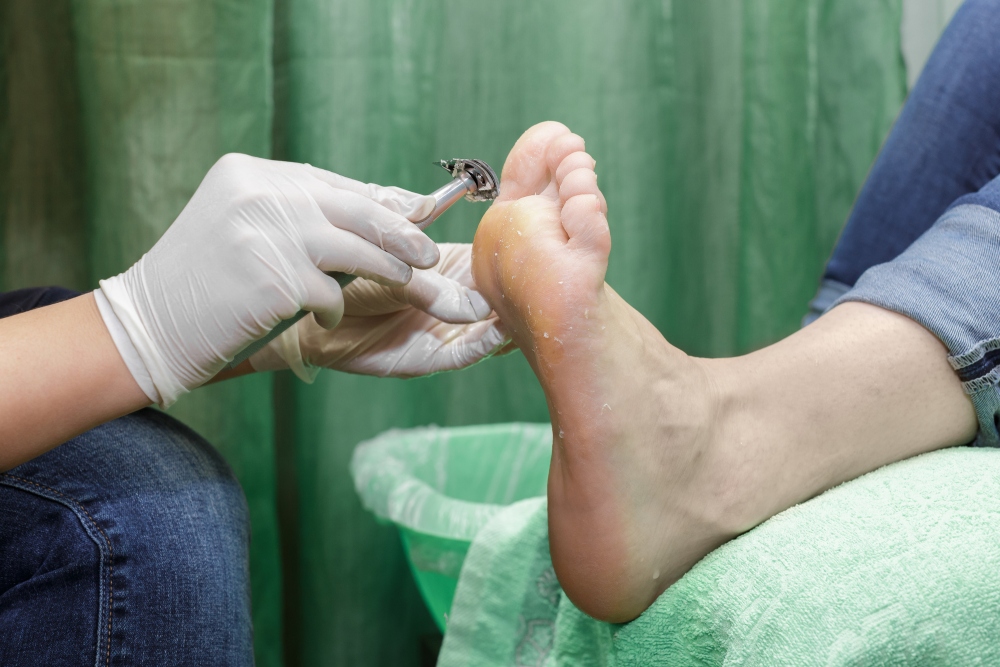Foot skin problems are often hard to ignore: itchy feet or toes, blisters and dryness can really cause discomfort. Trapped inside of shoes, these foot conditions often only get worse— ironically occurring in the winter when you’re forced to wear enclosed shoes that actually exacerbate the symptoms!
Unfortunately, many foot skin problems look alike, and it can become hard to identify your problem to begin treating it. That’s why we’re here to cover the four most common skin issues that plague your feet and offer some sweet relief.
Which foot skin problem applies to you?
Athlete’s Foot
Perhaps the most commonly known foot skin condition is athlete’s foot. This fungal infection manifests itself as a red, scaly rash or, in severe cases, as blisters. The rash usually starts between the toes, or on the underside or pad of your feet and can spread to your entire foot without proper care.

How to Treat Athlete’s Foot
Athlete’s foot is spread through contamination, picked up from the floor of a public area like your gym shower or from sharing towels or shoes with an infected person.
To treat this foot skin condition, it’s important to understand that this infection loves moisture and warmth. It’s pertinent to let your feet breathe. One of the worst things you can do for athlete’s foot is enclosure the rash in tight shoes surrounded by sweat.
Be sure to replace your socks after every use, wear open-toed shoes whenever possible and follow all these tips for preventing athlete’s foot. With proper care, your body will likely fight off this infection, but prescription medications may be necessary for extreme cases.
Plantar Warts
Is the bottom of your foot spotted with warts? These blister-like warts are called Plantar warts because they often form on the bottom of your foot (“Plantar” refers to your soles). These warts can vary in size and severity, as well as color— from yellow to white, dry-skin masses, even black-headed— and often affect children, who are more inclined to run around barefoot.

How to Treat Plantar Warts
Plantar warts are caused by the HPV virus, which enters through broken skin on the foot and festers behind the surface. As a viral skin infection, these warts typically take a long time to go away on their own. Fortunately, with the right prescription topical cream, the troublesome warts can dissipate in as little as five days.
Corns & Calluses
Calluses are thickened patches of skin which often form from excess pressure, due to rubbing around your ankle or the ball of your feet from ill-fitting footwear. Though often referred synonymously, corns are actually dead areas of skin.
How to Treat Corns & Calluses
Generally, soaking your feet in warm, soapy water softens corns and calluses to make them easier to remove. Moisturizing regularly can bring relief as well. If corns or calluses are caused by a foot deformity, shoe inserts may help your shoes fit better and prevent rubbing.
Oftentimes sufferers will file down the these thickened patches with a pumice stone, but sometimes corns or calluses can entrap blood vessels and can become painful once shaved down. Because of this, sometimes x-rays are needed. In extreme cases, surgery to remove the build-up is the only form of relief.
Dyshidrotic Eczema
Much like athlete’s foot, eczema presents itself as red, scaly patches of skin. Dyshidrotic eczema is a name given to the rash and accompanying blisters when it specifically affects your foot, around the tips or sides of your toes or your soles. The condition is often very itchy and can cause cracking of the skin and painful inflammation.

How to Treat Dyshidrotic Eczema
“Eczema” as a blanket term has diverse causes. It could form due to genetics, stress, excess moisture, diet. The list goes on and on.
In most cases, regularly moisturizing with unscented lotions, avoiding scratching or irritating your feet with rubbing or extreme heat and keeping the area clean help reduce symptoms. Typically topical creams like corticosteroids help to bring down swelling around the irritated skin, but because the causes can vary, it’s best to seek professional advice.
Get the Right Diagnosis for Faster Relief
You may be surprised by how often these four foot skin conditions are confused! What looks like a corn on one person may actually be a plantar wart or a patch of dry, flaky eczema.
In order to know for sure, it’s best to see a trained podiatrist if you have persistent irritation. Your foot doctor will be able to confirm the diagnosis and get you the treatment you need, right away.
Our team at Foot & Ankle Group can often get you in the same day you call. Give us a ring at 239.936.5400 to make an appointment, today.
Categorized in: Blog
